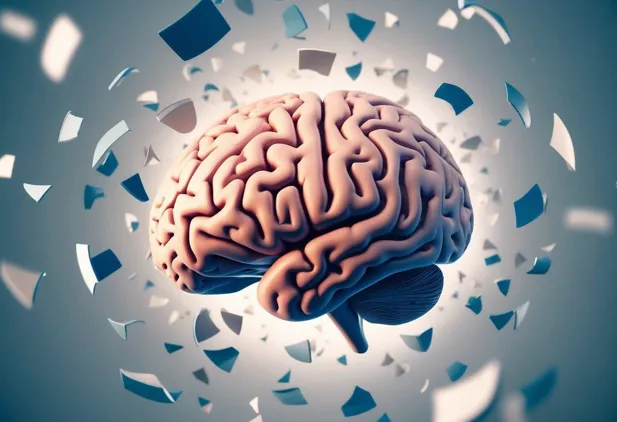Traumatic brain injuries can change a person’s life in an instant. These injuries happen when a sudden blow or jolt to the head disrupts normal brain function. Frost Law Firm, PC often deals with cases where victims face lasting effects that can impact their daily lives for years to come. While some people recover quickly, others require long-term care and support.
Even after getting treatment, people with moderate to severe traumatic brain injuries may live 9 years less on average than those without TBI. This shows how serious these injuries can be. The effects can touch many parts of a person’s life, from their thinking and emotions to their physical abilities and social interactions.
I’ve looked into the latest research on long-term TBI effects. In this post, I’ll break down what we know about how these injuries can affect people over time. I’ll also share some info on treatment options that may help improve quality of life for TBI survivors.
Key Takeaways
- Traumatic brain injuries can have effects that last for years after the initial injury
- Moderate to severe TBI may reduce life expectancy by about 9 years on average
- Recovery and rehabilitation can help improve outcomes for many TBI survivors
Understanding Traumatic Brain Injury
Traumatic brain injury (TBI) is a complex condition that can have wide-ranging effects. I’ll explain how TBIs are classified and what causes them.
Classification of Traumatic Brain Injury
TBIs are grouped into three main types: mild, moderate, and severe. Mild TBI, often called a concussion, may cause brief confusion or loss of consciousness. Moderate TBI can lead to longer blackouts and more noticeable symptoms.
Severe TBI is the most serious form. It can result in extended periods of unconsciousness, memory loss, and major brain damage. The Glasgow Coma Scale helps doctors rate TBI severity based on a person’s eye, verbal, and motor responses.
Primary Causes and Risk Factors
Falls are the top cause of TBIs, especially in older adults and young children. Car crashes, sports injuries, and violence are other common causes.
Some key risk factors for TBI include:
- Age (very young and very old are at higher risk)
- Male gender
- Alcohol use
- Not wearing protective gear during sports
- Dangerous jobs (like construction)
Athletes in contact sports face a higher chance of getting multiple TBIs over time. This repeated trauma can lead to lasting brain damage.
Immediate and Short-Term Impact of TBI

A traumatic brain injury (TBI) can cause sudden and serious effects. The first hours and days after a TBI are critical for assessment and treatment.
Physical and Cognitive Initial Symptoms
When I experience a TBI, I may lose consciousness. This can last for seconds or lead to a coma lasting days or weeks. I’ll likely have a bad headache and feel dizzy and nauseous.
Seizures are another possible symptom I might face. My brain could swell, increasing pressure inside my skull. This swelling can damage more brain tissue if not treated quickly.
I may feel confused and have trouble thinking clearly or remembering things. My speech could be slurred, and I might have problems with balance and coordination.
Emergency Assessment and Acute Care
When I arrive at the hospital, doctors will use the Glasgow Coma Scale to check how severe my TBI is. This scale looks at my eye opening, verbal responses, and motor responses.
Doctors will do scans to see if there’s bleeding or swelling in my brain. They’ll watch for signs of increased pressure inside my skull.
I’ll get treatment to prevent further damage. This may include:
- Medications to reduce swelling
- Surgery to remove blood clots
- Monitoring for infections
The goal is to stabilize me and prevent more harm to my brain in these crucial early stages.
Long-Term Effects and Complications
Traumatic brain injuries can have lasting impacts that persist long after the initial injury. These effects can be wide-ranging and affect many aspects of a person’s life and functioning.
Cognitive and Emotional Outcomes
I’ve found that cognitive problems are common long-term effects of TBI. Many people experience ongoing issues with memory, attention, and problem-solving. They may struggle to concentrate or multitask.
Mood changes are also frequent. Depression and anxiety often develop after a TBI. Some people have trouble controlling their emotions, leading to mood swings or inappropriate emotional responses.
Personality changes can occur too. A formerly easygoing person might become irritable or impulsive after their injury.
Physical and Neurological Sequelae
TBI can cause lasting physical and neurological issues. Headaches are a common complaint, sometimes persisting for years. Some people develop post-traumatic epilepsy, experiencing seizures that start weeks or months after the injury.
Vision problems may linger, including double vision or partial vision loss. Balance and coordination can remain impaired. Fatigue is another persistent issue for many TBI survivors.
In severe cases, TBI can lead to paralysis or weakness on one side of the body. This happens if the injury damages areas controlling movement.
TBI as a Chronic Health Condition
I’ve learned that TBI is increasingly viewed as a chronic health condition. Its effects can evolve and new problems may emerge over time. TBI raises the risk of other health issues like stroke.
There’s growing evidence linking TBI to neurodegenerative diseases like Alzheimer’s, especially with repeated injuries. This underscores the importance of ongoing medical care.
TBI can limit a person’s ability to work or live independently. These functional limitations may persist or worsen with age. Proper management and support are key for long-term quality of life.
Rehabilitation and Recovery

Rehabilitation and recovery after a traumatic brain injury (TBI) involve many services and support systems. The process aims to help patients regain lost functions and adapt to new challenges.
Rehabilitation Services and Therapies
I’ve found that rehabilitation for TBI patients often includes several key therapies. Physical therapy helps improve mobility and strength. Occupational therapy focuses on daily living skills. Speech therapy addresses language and swallowing issues.
Cognitive therapy is also important. It helps with memory, attention, and problem-solving. Some patients may need psychological counseling to deal with emotional changes.
Many start with inpatient rehab in a hospital setting. This provides intense, daily therapy. Later, they may switch to outpatient services. The exact mix depends on each person’s needs.
Strategies for Long-Term Adaptation
Long-term recovery from TBI often requires lifestyle changes. I’ve seen patients use memory aids like notebooks or smartphone apps. These help compensate for memory issues.
Breaking tasks into smaller steps can make them more manageable. Regular exercise and a healthy diet support brain health. Getting enough sleep is crucial for healing.
Some find joining TBI support groups helpful. These provide a space to share experiences and tips. Learning stress management techniques can also be beneficial.
Support for Caregivers and Families
Caregivers play a vital role in TBI recovery. They often need support too. I recommend caregiver support groups. These offer a chance to connect with others in similar situations.
Education about TBI is important for families. This helps them understand what to expect. Respite care services can give caregivers a needed break.
Some families benefit from family counseling. This can help them adjust to new roles and challenges. Social workers can help connect families with community resources.

